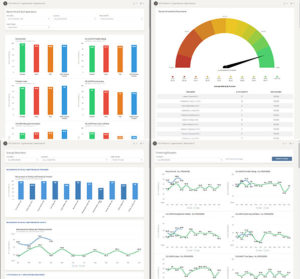Communication in healthcare is a particularly complex series of connections and critical interactions between patients, providers, staff, and organizations. From scheduling and check-in to seeing the physician and patient follow-up, there are numerous points at which communication can break down. This can negatively impact a patient’s outcome and overall experience. Research by the Agency for Healthcare Research and Quality found that the majority of medical errors are due to communication failures. Medication errors were found to be the most common communication-driven mistakes, accounting for over 50% of all medical errors (1). An examination of 23,000 medical malpractice lawsuits by CRICO Strategies found that 30% of those lawsuits were due to communication failures, resulting in over 1.7 billion in malpractice costs (2).
 Measuring Communication
Measuring Communication
These are alarming statistics during a time when value-based care models are prevalent and being scrutinized more than ever. Financial performance is largely dependent upon the measurement of quality and patient encounters through key metrics such as readmissions rates and data from patient experience surveys. Mandated use of the CG CAHPS (Clinician and Group Consumer Assessment of Healthcare Providers and Systems) survey for practices participating in Primary Care First, Accountable Care Organizations, and other government-sponsored reimbursement programs continues to fuel these measurements. CG CAHPS includes questions regarding communication and service-related behaviors. Both patient surveys are designed to capture information related to care from a patient’s perspective. Higher scores on questions such as “nurses listening” and “doctors explaining information” were found to be linked to a decreased risk of readmission (3).
 Better Communication = Better Outcomes
Better Communication = Better Outcomes
Recent research has demonstrated that there is a strongly correlated relationship between good communication and higher patient satisfaction (4). Not only does this connection increase trust and improve treatment adherence, it suggests that more than a quarter of readmissions could be avoided with better communication among healthcare teams and between providers and patients. By making efforts to improve communication, organizations can expect to increase patient satisfaction, improve outcomes, and reduce readmissions rates.
Most healthcare leaders recognize the significant impact communication has on the overall performance of an institution. The challenge is how to improve it. There are countless theories, blogs, training modules, and initiatives on how to improve communication within a healthcare organization. Finding the right method is largely dependent upon the institution itself, however, there are many ways technology can help relieve some of the burden.
 Improving Communication
Improving Communication
Healthcare technology and telemedicine present many benefits that providers and organizations can use to improve communication and engage patients in their care. It can be used to help patients understand their medical conditions, surgical procedures, and recovery. Regular communication can assist with the coordination of care, help with managing chronic disease, and improve the overall quality of care. Involving patients in their care encourages the patient to take ownership of their health which results in improved outcomes.
As communication in healthcare improves, both through the use of technology and through interpersonal skills training, better patient communication will help organizations become more efficient, provide better quality, and enhance the patient experience. Ultimately, improving communication leads to higher quality, which drives value-based care. When higher quality is part of the value-based care equation, success is inevitable.
Please let us know if you have comments or questions, and subscribe to our Email Updates so that you can be assured to receive Thinking Thursdays TIPs and other articles from our blog.
Thank you!
Jerry
REFERENCES:
- https://psnet.ahrq.gov/web-mm/impact-communication-medication-errors
- https://www.hipaajournal.com/effects-of-poor-communication-in-healthcare/
- https://pubmed.ncbi.nlm.nih.gov/30919571/
- https://journals.sagepub.com/doi/full/10.1177/2374373521998839



1 thought on “The Impact of Communication in Healthcare”